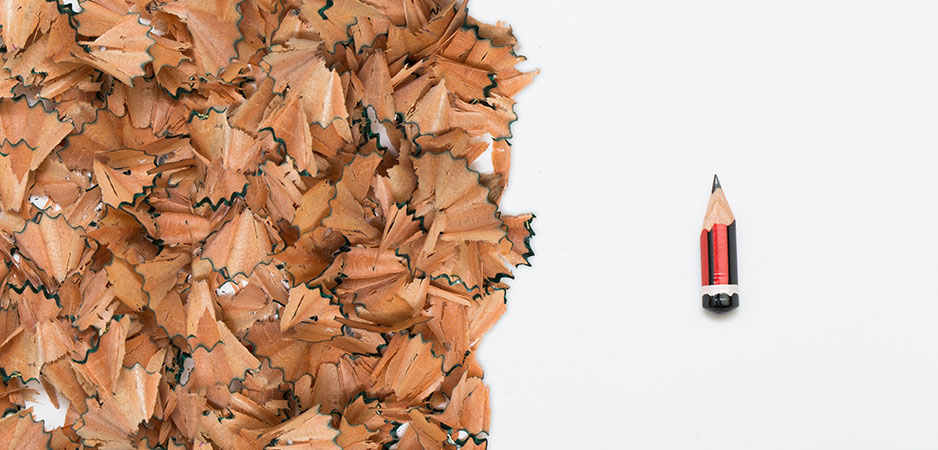It has been traditionally accepted in modern societies that the media play a key role in the way they function. Journalists counteract the abuses of power by governments, frame political issues and are implicitly recognized as being part of the political system with a remarkable amount of social influence.
In countries where the political systems are broken, and where journalism can often carry a risk to one’s life, the role of journalists becomes even more critical. They become witnesses against oppression who flag the voices of the unheard, bringing to light facts and events that either fall below the radar or are purposely suppressed. In 2018, the International Federation of Journalists (IFJ) expressed concern about media safety in Sri Lanka and asked all social actors to defend the freedom and independence of the press, as well as to protect journalists’ rights. In a 25-year period, from 1990 to 2015, 32 journalists have been killed on the island according to data by the IFJ.
This is not the complete picture, however. Some citizens, who have disappeared over the years, are not on the list of the official victims. There is the case of cartoonist Prageeth Eknaligoda who, after phoning his wife, never reached home on January 24, 2010. Eknaligoda frequently used his pen to depict corruption, human rights abuses and the erosion of democracy in Sri Lanka. Almost a decade on, he is still missing, while his case remains open. His wife, Sandya, has been restlessly fighting for answers despite death threats, abuse and harassment she and her children have faced over the years.
Communicative Weapons
The genre of political cartoons, which includes satire and caricatures, usually conveys editorial commentary on politics and politicians, as well as current events, and plays a vital role in the construction of the political discourse in society. Political cartoons are symbolic illustrations that can also become powerful communicative weapons. They are hugely efficient at transmitting messages and do so in the most economical way. Few words are needed, often coated in witty humor and usually making use of hyperbole and satire in order to question authority and probe social problems.
To some extent, cartoonists nowadays are like modern jesters, like those in the Middle Ages who were allowed to tell the truth to the king without risking their heads being chopped off. The big difference, however, is that cartoonists, unlike those merrymen of yore, are not safe. Many have been threatened and even killed for being considered offensive, such as those who lost their lives in the 2015 attack on the Paris offices of the satirical magazine Charlie Hebdo. Undeterred, Sri Lanka’s cartoonists have taken on the extremists flaming inter-ethnic conflict on the island.
Even though there is no far-right movement as such in Sri Lanka, according to Dr. Dayan Jayatilleka, a Sri Lankan diplomat and academic, what is rising across the country is a type of religious alt-right movement, with “the distinctive markers that define its core constituency and its social consciousness.” Some of the markers that make the Sri Lankan alt-right unique, in his opinion, are “the role of the clergy/ex-military interface, the dominant ideology, and the mentality and dynamics within the clergy.” Assuming a defensive attitude, these extremists are constantly looking for — and finding — threats to the Sinhala-Buddhist identity, mainly in the form of Sri Lanka’s multi-ethnic and multi-religious community.
Focusing on the post-civil war era, after 2009, minorities in Sri Lanka have not enjoyed a peaceful coexistence with the Buddhist majority. The new preferred target has been the Muslim community that makes up barely 9% of the island’s population. Systematic attacks against Muslims have become a constant, with several high casualty incidences recorded in the cities of Aluthgama in 2014, Gintota in 2017 and Digana in 2018. In some of these cases, violence was instigated by the speeches delivered by the ultra-nationalist Buddhist monks, who have acted with impunity under the government of former President Mahinda Rajapaksa and now under President Maithripala Sirisena. This ethno-religious, ultra-nationalist alt-right in Sri Lanka has been shaping the agenda of both the previous and the current administrations.
As Professor Javadeya Uyangoda, a constitutional expert and political scientist, suggests, there is a “consolidation of a hard right-wing alternative to a weak and shaky democratic regime option,” represented by groups of extremist Buddhist monks. One such group is the Bodu Bala Sena (Buddhist Power Force), which organizes anti-Muslim actions, both online and offline. It has initiated boycotts of Muslim companies and halal products, opposes Muslim women’s clothes, stages protests outside Muslim-owned retail outlets and the Embassy of Bangladesh in Colombo, spreading hate speech in public meetings and on social media. The group have also expressed a wish to see a Hitler-type military ruler come to power in the elections scheduled for later this year.
Social Function
In this political environment, cartoonists become central voices to call out those abuses of power. Their real social function, equivalent to that of journalists, may pass unnoticed by the average reader. In this sense, cartoonists are activists — vital for society but threatening for the authorities, since they can easily reach the common man who may not have the time or the capacity to read lengthy articles filled with convoluted political jargon.
Sri Lanka has always had a strong tradition of political cartoons, but currently the genre seems more robust than ever. Among the best-known artists working today are Awantha Artigala, Gihan de Chickera, Dasa Hapuwalana, Sajith Bandara and R.C. Pradeep. Their daily cartoons are easy to consume and direct in the brutality they betray.
Sri Lankan cartoonists have been speaking up against extremism and racism backed by the alt-right, the unconstitutional measures adopted by the government, the periodic bans on social media following outbreaks of ethnic conflict and the wave of Islamophobia that arose after the devastating Easter Sunday attacks earlier this year. They have never lowered their voices, brandishing their pens together with their political conscience and bravery as their only weapons.
Political cartoons are a symptom of a healthy society. Together with the political opposition, members of civil society, activists and journalists, cartoonists are essential actors in democratic and non-democratic spaces. Let’s hope that one day, Sri Lankan cartoonists will be able to satirize peaceful and positive events in their homeland.
*[The Centre for Analysis of the Radical Right is a partner institution of Fair Observer.]
The views expressed in this article are the author’s own and do not necessarily reflect Fair Observer’s editorial policy.
Support Fair Observer
We rely on your support for our independence, diversity and quality.
For more than 10 years, Fair Observer has been free, fair and independent. No billionaire owns us, no advertisers control us. We are a reader-supported nonprofit. Unlike many other publications, we keep our content free for readers regardless of where they live or whether they can afford to pay. We have no paywalls and no ads.
In the post-truth era of fake news, echo chambers and filter bubbles, we publish a plurality of perspectives from around the world. Anyone can publish with us, but everyone goes through a rigorous editorial process. So, you get fact-checked, well-reasoned content instead of noise.
We publish 2,500+ voices from 90+ countries. We also conduct education and training programs
on subjects ranging from digital media and journalism to writing and critical thinking. This
doesn’t come cheap. Servers, editors, trainers and web developers cost
money.
Please consider supporting us on a regular basis as a recurring donor or a
sustaining member.
Will you support FO’s journalism?
We rely on your support for our independence, diversity and quality.






